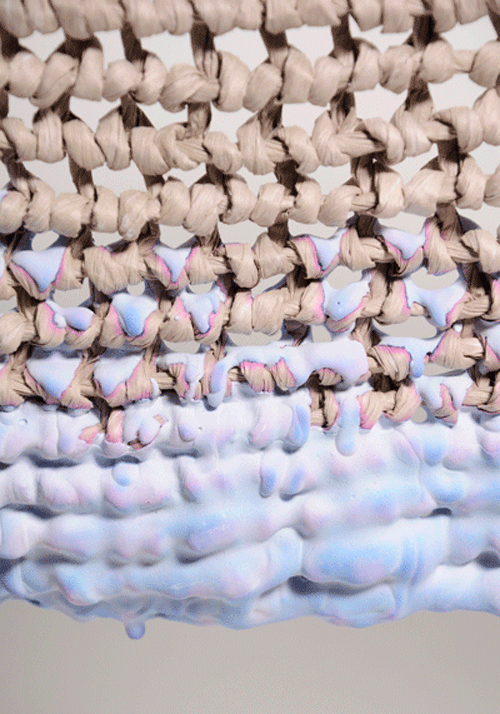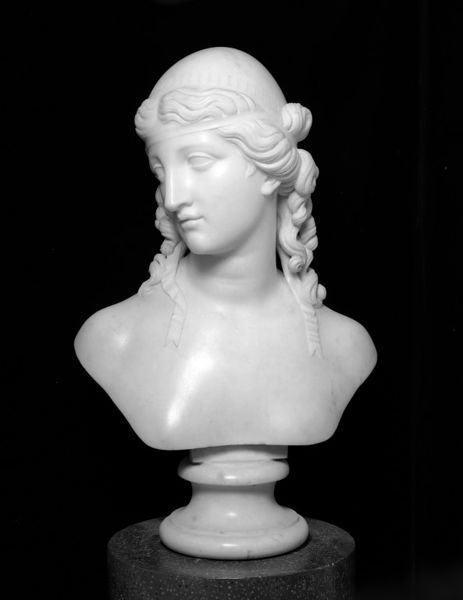
Project 2 was the next stepping-stone on the way to Digital Media Practice 3 – Final Project, further developing on the foundations laid down in Project 1 and improving upon the experimental processes explored. The notion of the Synthetic Organic rather than Human < > Object has become the primary focus and this will continue into Project 3. For Project 3 I hope to culminate my research and experiments undertaken so far into a final output including a full realisation of my central idea, continuing to develop and refine both the physical and the digital choir in accordance with my reflections on Project 2. I hope to fully produce the physical choir in its entirety of twelve mouths each with a speaker attached pitch shifted to twelve different values, this will include an improved sonic output that should allow for the voice input to be looped on playback until another inputs over it. For the digital choir, I will further experiment with JavaScript in order for the mouths to react to different frequencies and also react directly with the physical output. I would ideally like to achieve a mirroring with a full twelve-piece digital choir, however this may not be realisable due to the technical limitations of loading twelve separate .obj files. The final output for Project 3 will be in the form of a final exhibition bringing together the work I have produced across all three projects, this will be held off campus and outside the traditional concepts of a gallery setting. Ideally the location will compliment the theoretical underpinning of my work and seek to question that which we know of the human, the machine, the organic and the synthetic. This could take the form of a house or disused shop, a place where the human feels comfortable and has pre-conceived notions of what to expect that can be subverted and turned on its head as a feature of the exhibition. One of the aspects I do want to experiment further with is the materiality of the combination of synthetic and organic in the physical and digital realm, in particular for the physical object to explore different plastic materials and how each affects the final object:
Silicone, any of a class of synthetic materials that are polymers with a chemical structure based on chains of alternate silicon and oxygen atoms, with organic groups attached to the silicon atoms. Such compounds are typically resistant to chemical attack and insensitive to temperature changes and are used to make rubber and plastics and in polishes and lubricants.
Polyvinyl chloride (PVC) incorporates chlorine atoms. PVC is stiff, strong, heat and weather resistant, properties that recommend its use in devices for plumbing, gutters, house siding, enclosures for computers and other electronics gear. PVC can also be softened with chemical processing, and in this form it is now used for shrink-wrap, food packaging, and rain gear.
Poly(methyl methacrylate) (PMMA), also known as acrylic or acrylic glass, is a transparent thermoplastic often used in sheet form as a lightweight or shatter-resistant alternative to glass. The same material can be utilised as a casting resin, in inks and coatings, and has many other uses.
This will also force experimentation with different processes in order to create it, whilst 3D printing is effective in combining the digital in its production other processes such as vacuum forming, injection moulding and casting may produce an object that better communicates the collision between the organic and the synthetic. Alternatively the advanced technological aspect the 3D printer brings could be lost, the more effective solution may be a combination of several processes and taking inspiration from Xiao Li’s fashion collection Spring/Summer (2014) (Fig. 1) whereby she dipped the material objects in silicone to form an outer synthetic surface that either moulded to the knitted pattern underneath, or were debossed with such. Or Anouk Haegens’ Merging Worlds (2011) (Fig. 2) that explored when two worlds merge through the collision of the rugged with the refined, or construction (concrete, rubber) with soft furnishing (macramé, cotton). The stark boundary created in both of these projects is interesting to consider, especially when you make the realisation that the boundary doesn’t exist at all and instead the synthetic has adhered and combined with the natural to create a transformed surface. There is also a sculptural element here that was highlighted by the exhibition of Human < > Object at the LSFM Degree Show and not yet explored fully, the objects themselves evoke the classical marble sculptures on display in the V&A Sculpture Galleries and in particular the notion of the bust (Fig. 3), ‘Funerary monuments and portrait busts were the most common ways in which people were commemorated in sculpture… The likeness might be taken from life or a death mask, or from some other source, such as a painting.’ (V&A, 2016). I would like to take this element further, and while the physical objects of the mouths will be part of an interactive installation, I want them to also be able to exist on a sculptural level outside of this. This classical organicism often associated with sculpture when disassembled and reassembled through the digital links back to my central notions of blurring the boundary between the two.
‘Stringent paper yarns meet frivolous smooth viscose.
Cotton knots flow into concrete.
Rubber covering a soft surface.
Cast aluminium resembling knotted ropes.
A story of combining and merging materials, colour and patterns.’
(Anouk Haegens, 2011)
As a continuation of my theoretical research I will apply Steven Shaviro’s Discognition (2016) as a further perspective on the notions of consciousness, or really sentience, and asks us to think outside of pre-conceived notions of the mind from the view of science fiction narratives. ‘Most crucially, an entity perpetuates itself by appropriating its own prior states of existence. But an entity also appropriates other entities in its surroundings. It picks up whatever it encounters: whatever affects it, or provides conditions or resources for its own continued existence.’ (Shaviro, 2016, 17). Feeling, from Alfred North Whitehead’s theory of such, becomes the focus. Plants, animals, objects can be sentient without being conscious, they encounter the world but not necessarily in the way we have come to understand. This is interesting to consider in terms of human existence in combination with the machine and the re-working of this in the concept of the cyborg. If an object can pick up what it encounters, can the object feel, perceive or experience subjectively? This line of enquiry also throws up notions of artificial intelligence I have heretofore tried to avoid, as part of Project 3 it will be thought-provoking to consider these questions as part of the production stage.
Bibliography:
Haegens, A. (2011). Merging Worlds. [online] Anouk Haegens. Available from http://www.anoukhaegens.nl/MERGING-WORLDS [Accessed 9 May 2016].
Shaviro, S. (2016). Discognition. London: Repeater Books.
Victoria and Albert Museum. (2016). Room 24: Sculpture in Britain – Portraits & Memorial Sculpture. [online] V&A. Available from http://www.vam.ac.uk/content/galleries/level-1/room-24-sculpture-memorial/ [Accessed 9 May 2016].
List of Illustrations:
![]()
(Fig. 1) Xiao Li Spring/Summer (2014)

(Fig. 2) Anouk Haegens Merging Worlds (2011)

(Fig. 3) V&A Helen of Troy (ca. 1825-1830)
